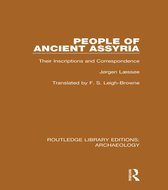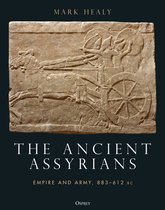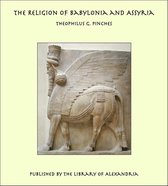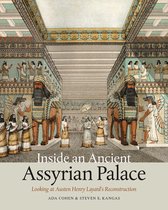Ancient and Modern Assyrians Ebook Tooltip Ebooks kunnen worden gelezen op uw computer en op daarvoor geschikte e-readers. A Scientific Analysis
Afbeeldingen
Artikel vergelijken
Samenvatting
Some scholars have doubted or denied the continuity of the Assyrian people from the times of empire to the present time. This work, based on a scientific analysis, sheds light on the subject, and demonstrates the continuous existence of the Assyrian people.
Assyria, (northern Iraq), was a state grouped about the heavily fortified city of Ashur, on the middle of the Tigris River. Assyrians had become civilized in the third millennium BC, under the impetus of Mesopotamian development. They created the first empire known to history that was run by an empire administration. The empire created by Sargon Sharukin, much earlier in the third millennium, did not have an administration to hold it together.
Toward the close of the Bronze Age (1700-1200 BC), Assyria had expanded westward to the middle of the Euphrates River, and in the south they held Babylon temporarily. Tiglat-Pileser I (1114-1076), extended Assyrian rule to the Mediterranean. But, Adadnirari II (911-891 BC) may be called the father of Assyrian imperial administration. Empire building was a necessity of economic development, which was based on the technological advances caused by the introduction of iron and the alphabet. International trade was necessary for the growth of industry and manufacture, and the Assyrians became the tools to carry out this historic economic necessity. The Assyrian army was the first army to use iron arms. The Assyrian Empire was defeated, in 612 BC, by an alliance of Medes (an Iranian people), Persians (Iran), Babylonians, and Cythians. Since then, Assyria has been governed by Persians, Greeks, Arabs and Turks.
The Assyrians were the first non-Jewish people to accept Christianity, and since then, Christianity has become their identity. They burned all their ancient books that reminded them of their pagan kings. Thus, with time, a dark cloud was cast over their memories that separated them from their glorious past. But, now and then, there were sparks from the remote past that testified to the persistence of memory. Only recently has the full national awareness been restored. There are, still, scholars who doubt or deny any link between the ancient and the Modern Assyrians. They argue that the Assyrians were all massacred during the destruction of their empire. This book sets out to demonstrate that the Assyrians were not all massacred during the destruction of their country in 612 BC, and that they emerged as a Christian people in Assyria (northern Iraq) and the neighboring countries.
Productspecificaties
Inhoud
- Taal
- en
- Bindwijze
- E-book
- Oorspronkelijke releasedatum
- 10 april 2008
- Ebook Formaat
- Adobe ePub
- Illustraties
- Nee
Betrokkenen
- Hoofdauteur
- V Yana (Bebla) George V Yana (Bebla)
- Tweede Auteur
- George V Yana
- Co Auteur
- George V. Yana
- Hoofduitgeverij
- Xlibris Us
Lees mogelijkheden
- Lees dit ebook op
- Android (smartphone en tablet) | Kobo e-reader | Desktop (Mac en Windows) | iOS (smartphone en tablet) | Windows (smartphone en tablet)
Overige kenmerken
- Studieboek
- Ja
EAN
- EAN
- 9781465316295
Kies gewenste uitvoering
Prijsinformatie en bestellen
De prijs van dit product is 3 euro en 99 cent.- E-book is direct beschikbaar na aankoop
- E-books lezen is voordelig
- Dag en nacht klantenservice
- Veilig betalen
Rapporteer dit artikel
Je wilt melding doen van illegale inhoud over dit artikel:
- Ik wil melding doen als klant
- Ik wil melding doen als autoriteit of trusted flagger
- Ik wil melding doen als partner
- Ik wil melding doen als merkhouder
Geen klant, autoriteit, trusted flagger, merkhouder of partner? Gebruik dan onderstaande link om melding te doen.








